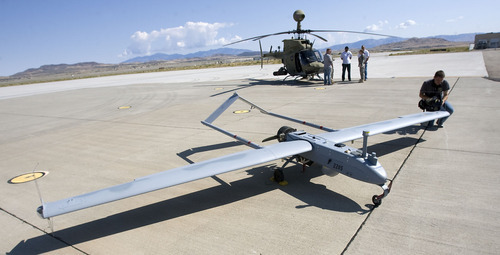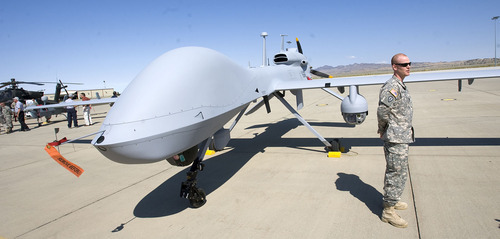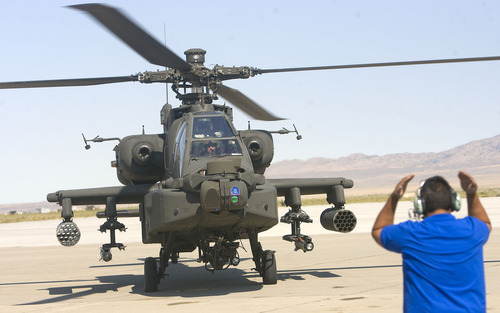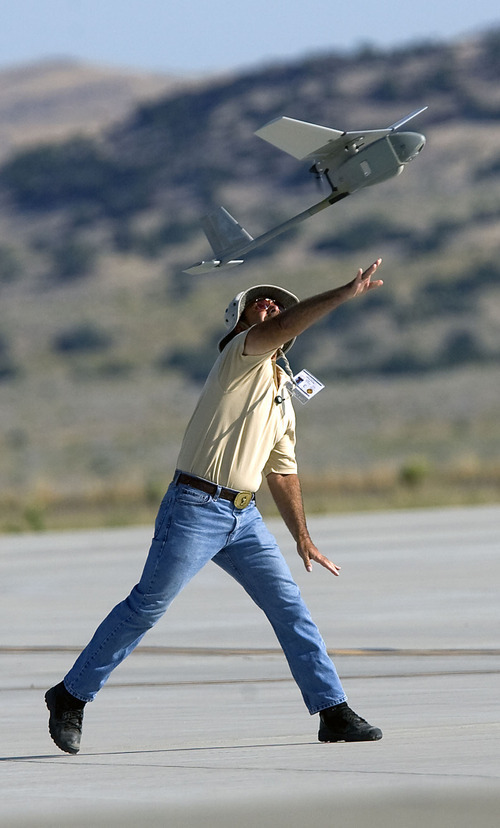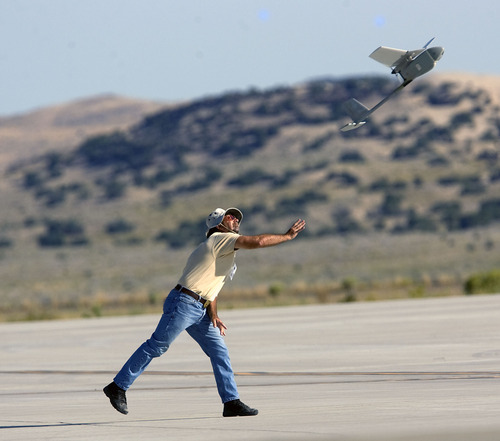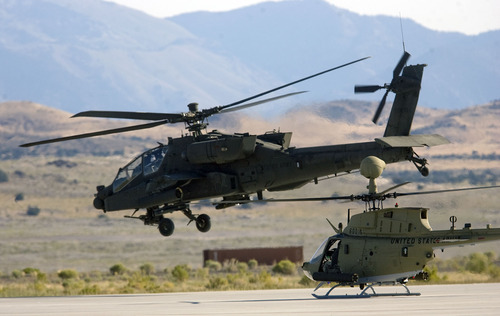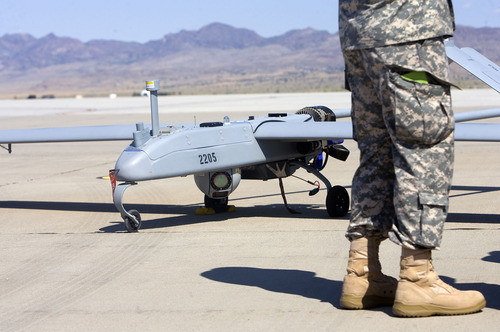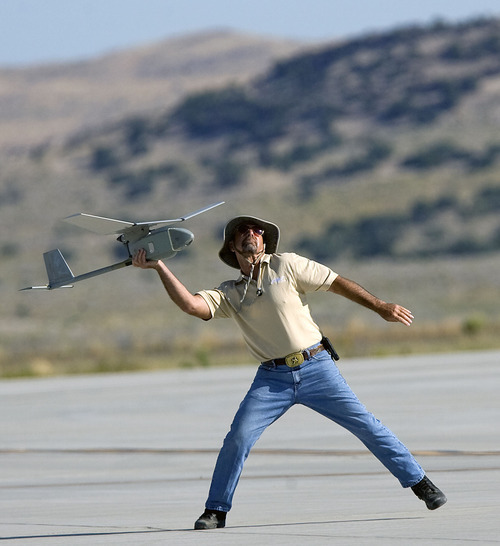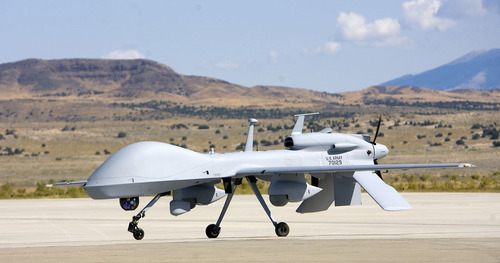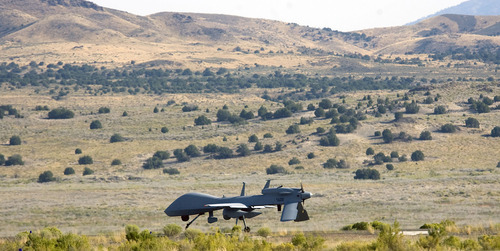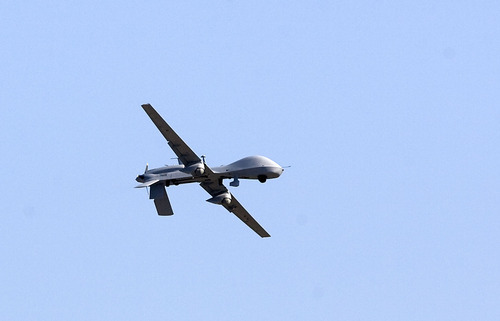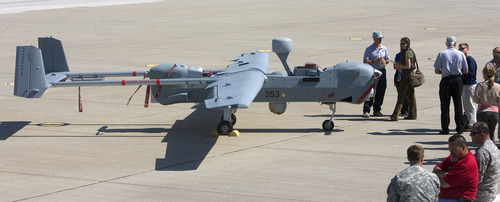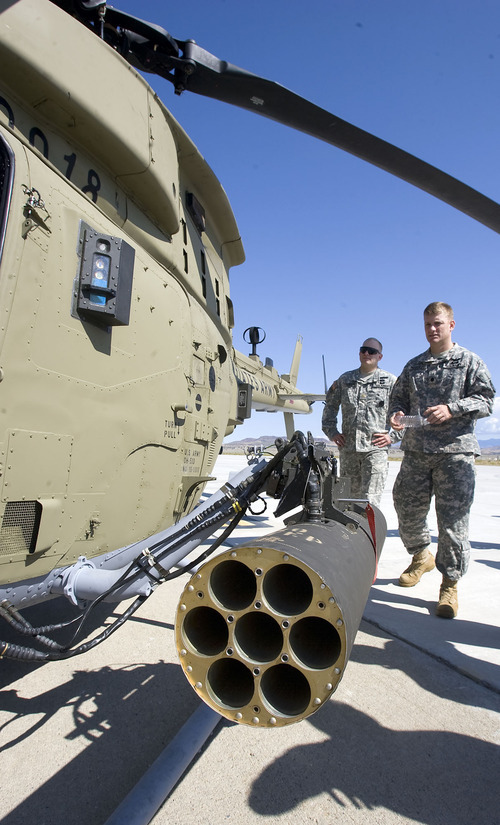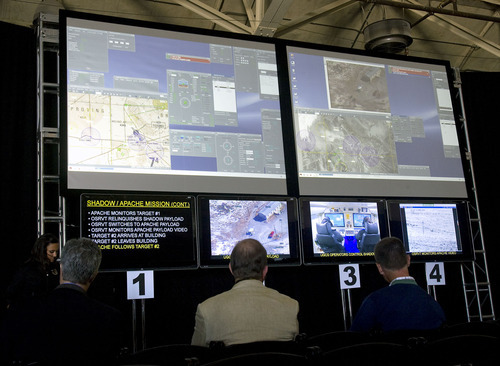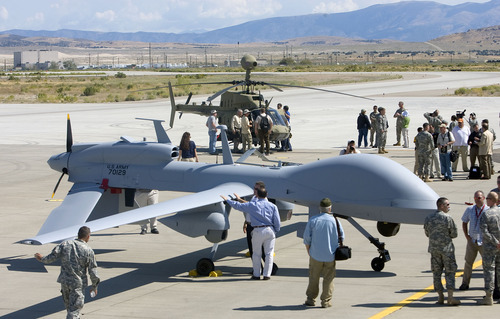This is an archived article that was published on sltrib.com in 2011, and information in the article may be outdated. It is provided only for personal research purposes and may not be reprinted.
Dugway Proving Ground • The Army allowed a peek behind the curtain at Dugway Proving Ground on Thursday, showcasing six years of work to get drones, fighting helicopters and ground commanders working together to improve the quality of battlefield information.
On the second of three days of demonstrations, more than 30 reporters and photographers from around the country watched as the Army put pilots in Apache and Kiowa helicopters, launched five unmanned aircraft — or drones — and had all seven aircraft shoot and stream live video.
Sometimes "commanders" and "soldiers" on the ground were in control of the cameras and drones; other times, they would hand off control to the pilots who, ultimately, "killed" one insurgent and blew up an abandoned tank to keep it from falling into enemy hands.
After the aircraft launched from Michael Army Airfield, reporters watched from inside a hangar as what looked like a massive video game — with a touch of remote-control airplanes — unfolded on large screens.
Troops in Afghanistan are using some of the technology now, but much of it is fresh from Army and contractors' labs around the country and will roll into war zones in the coming years.
"I think it's really going to resonate with you once you see what's inside and behind the curtain," a proud Tim Owings, deputy project manager for the Army's Unmanned Aerial Systems, said at the start of the four-hour demonstration, an exercise called MUSIC, for Manned Unmanned Systems Integration Capability.
Dugway Proving Ground's employees saw the demonstration on Wednesday, and VIPs from the Department of Defense, various military branches and defense contractors are to witness the demonstration at Dugway on Friday.
The point is to show the Army's technological progress toward improving information in the heat of battle.
"A picture is worth a thousand words," said Charlie Parker, one of the Kiowa helicopter pilots during Thursday's exercise. "Right now in the field, you're verbally trying to describe a target and confirm that you're talking about the same thing."
Apache attack helicopters have been equipped for a couple years with screens, so pilots can see the video feeds from surveillance drones working in the same war zone area. The Kiowa fleet will begin to get that capability in late 2012, and the next generation of Apaches, due out next year, will give pilots the ability to also control the drones and the optics they carry.
"We can form a course of action prior to arrival instead of stumbling into it and figuring out what we need to do next," said Jim Wright, who also piloted the Kiowa. "Poor decisions are most often a result of bad information in the first place."
In the near future, a lone soldier will be able to carry a drone in a backpack, unfold and launch it and then control its payload — or optics and video stream. At present, such a soldier can do all but control the camera. Another future technology, demonstrated Thursday on the Gray Eagle unmanned aircraft, will put three cameras on one craft, allowing "eyes" on spots on the ground miles apart.
Ed Gozdur, deputy product director for the Army's Common Systems Integration, a new branch of the Army set up in 2005, said the new technology is "allowing commanders to make tactical decisions they couldn't make before because they didn't have that kind of information."
The Army and contractors design much of the technology elsewhere, but testing and integration of the manned and unmanned systems happens at Dugway Proving Ground, 80 miles west of Salt Lake City.
Utah's west desert was chosen over bases in Arizona because of its vast area of restricted air space as well as the fact there is little radio traffic to compete for frequencies the Army needs, Owings said.
The Rapid Integration and Acceptance Center was created at Dugway in 2009, and a number of new hangars and test buildings are already in place around Michael Army Airfield. The center has eight permanent staffers, and another 130 contractors typically work there. Two hundred more have been there for three weeks, preparing for this week's exercise.
"We plan a complete complex that's going to get much bigger," Owings said.


